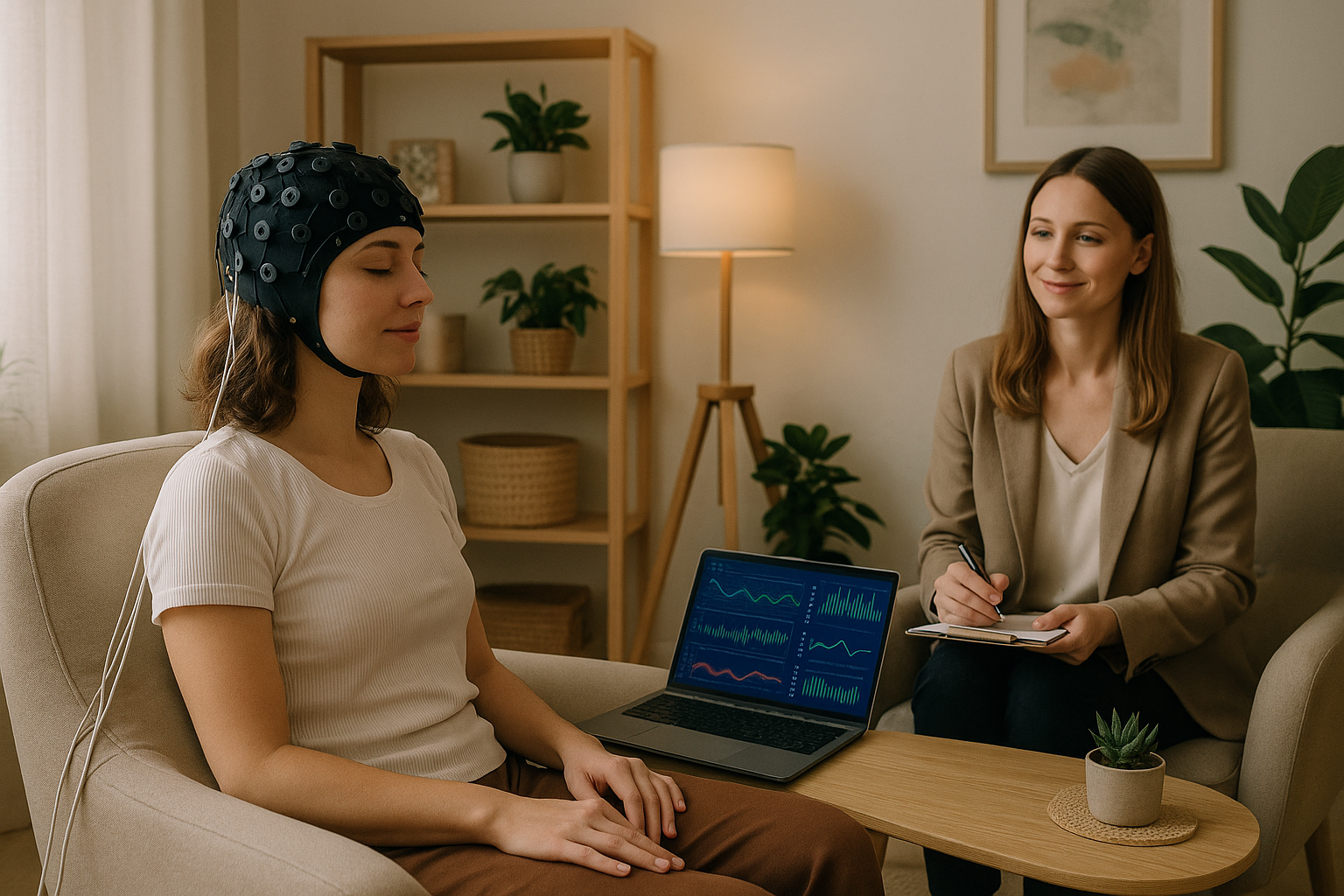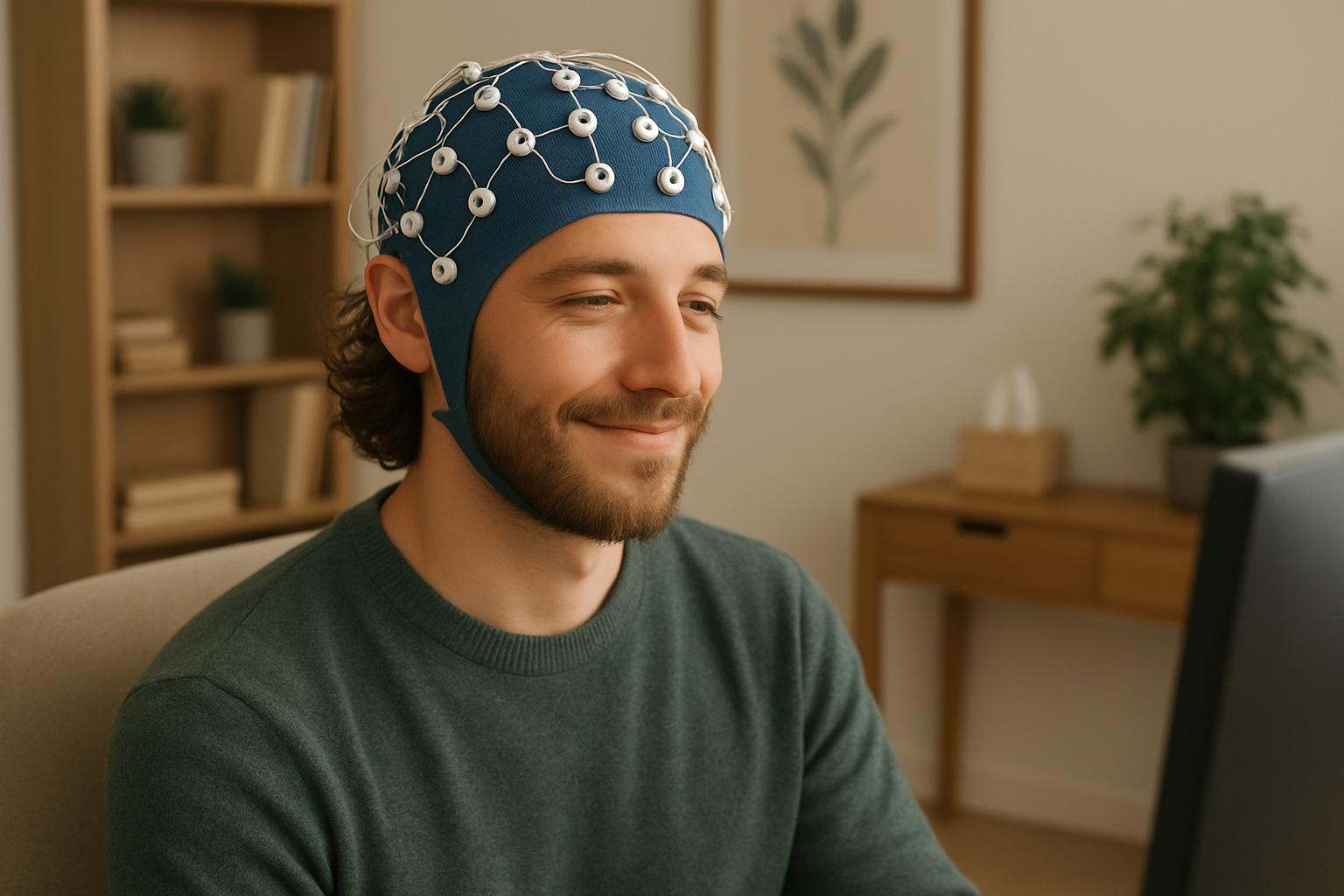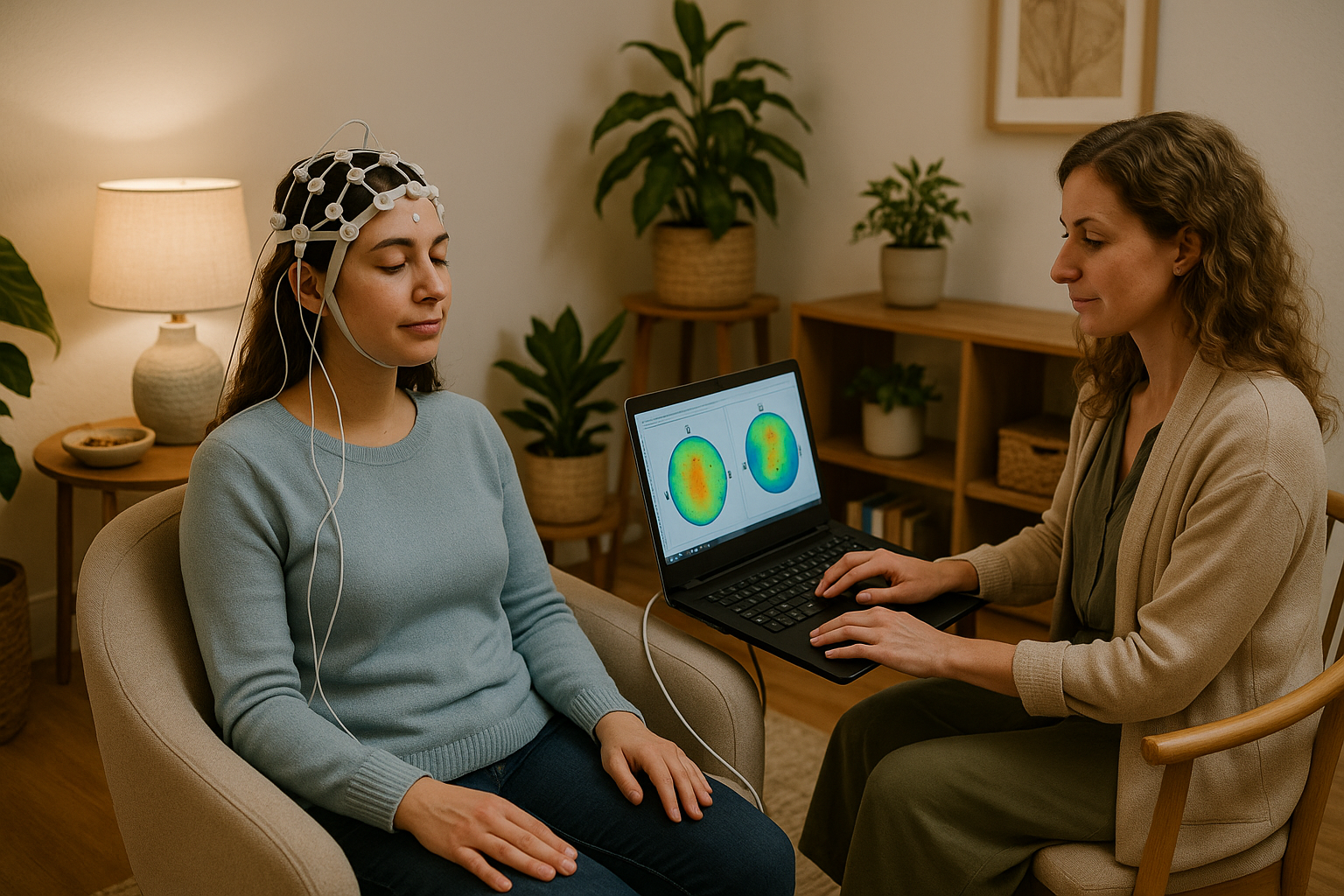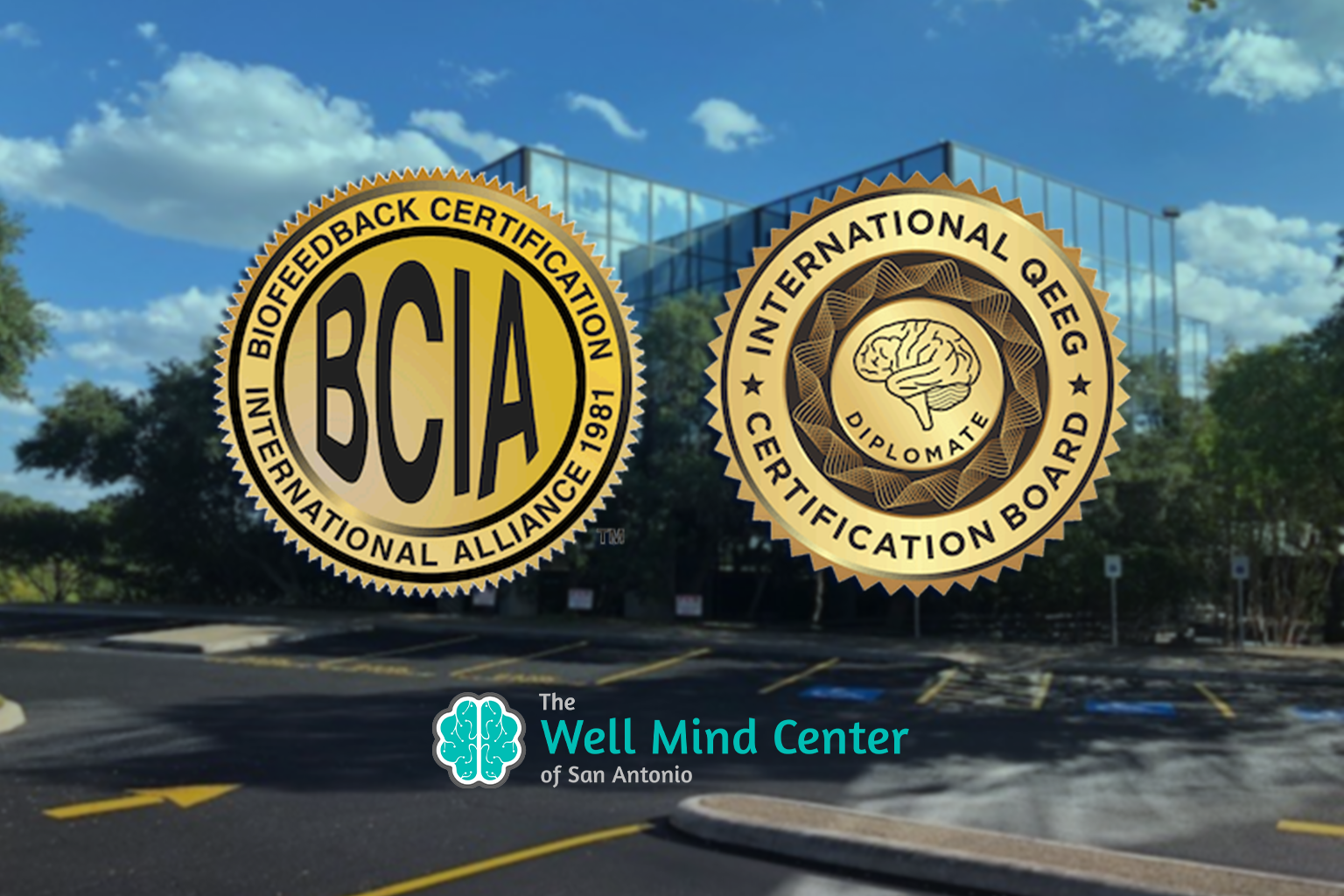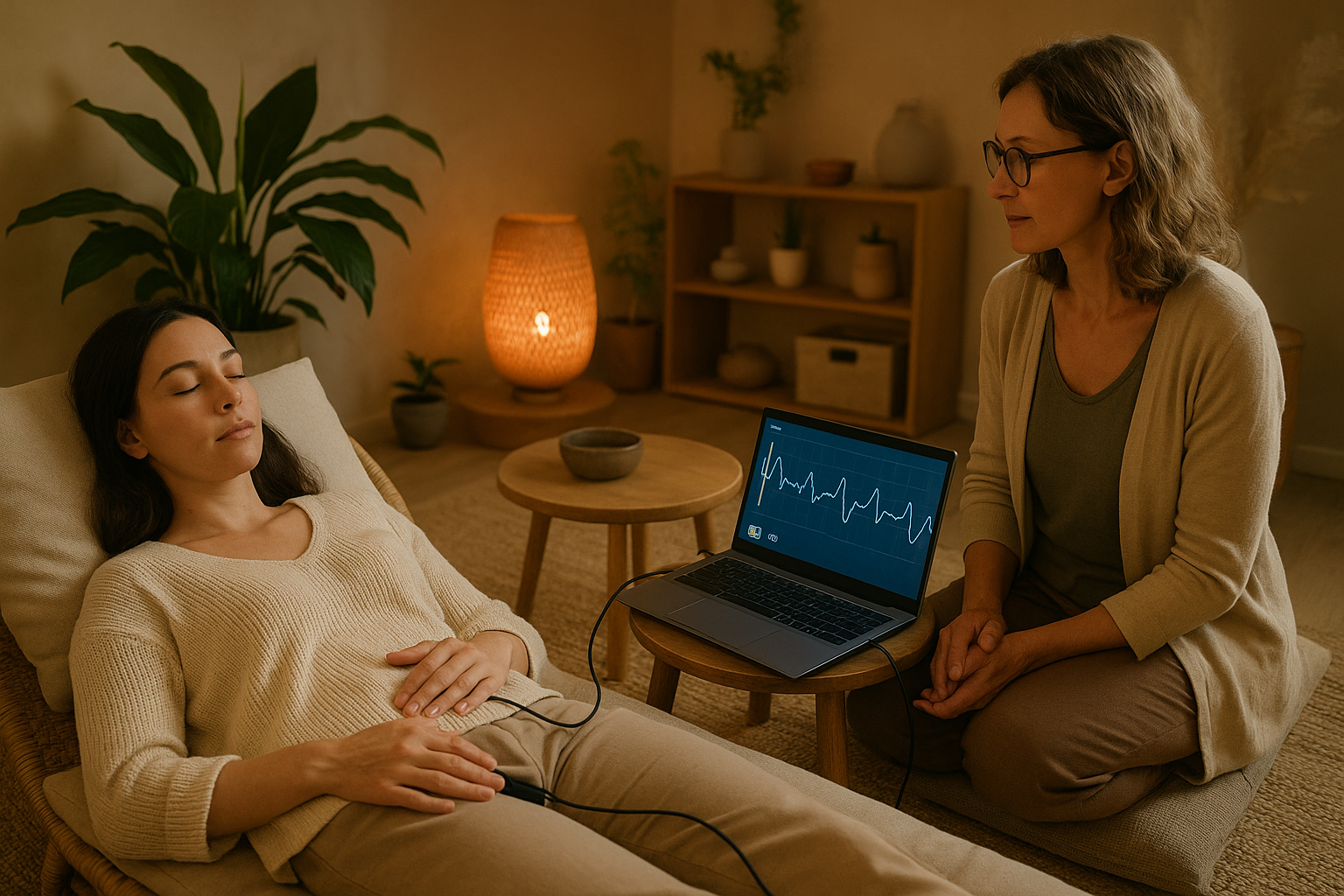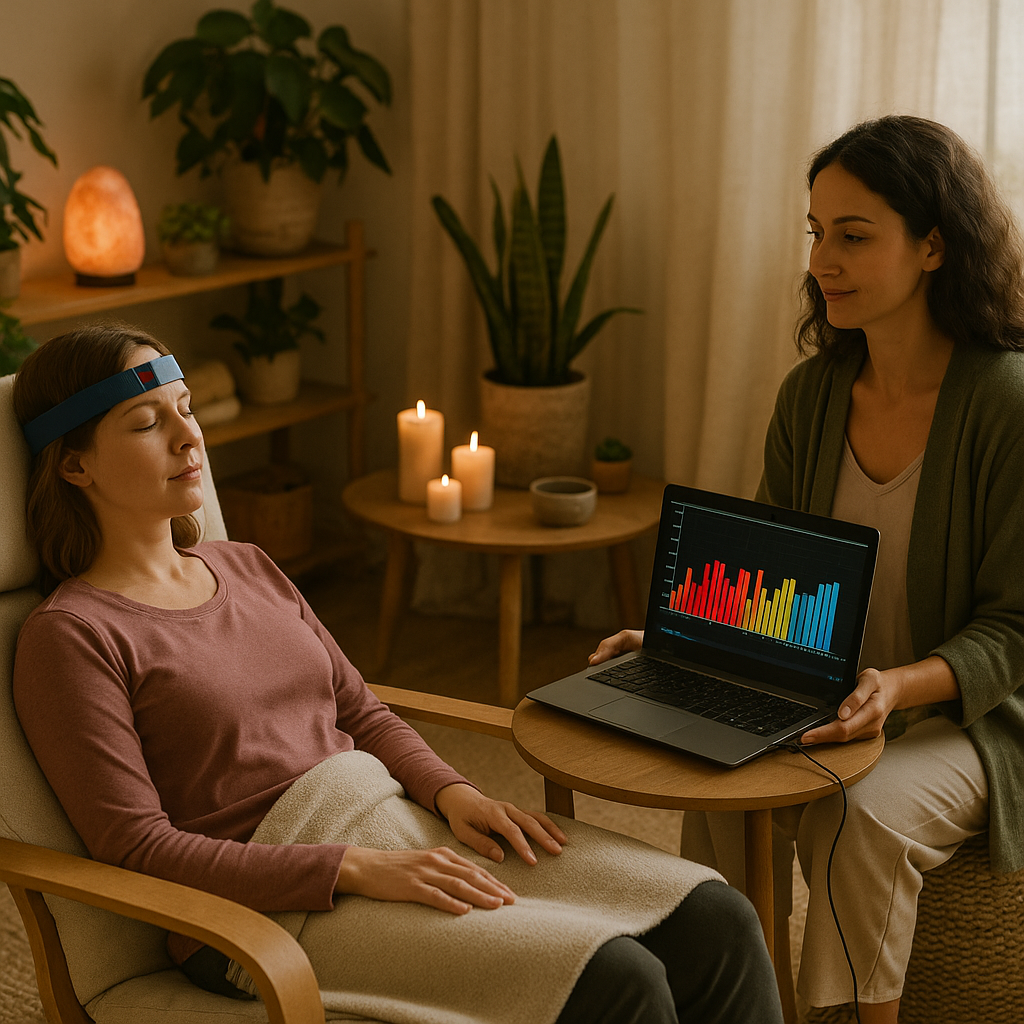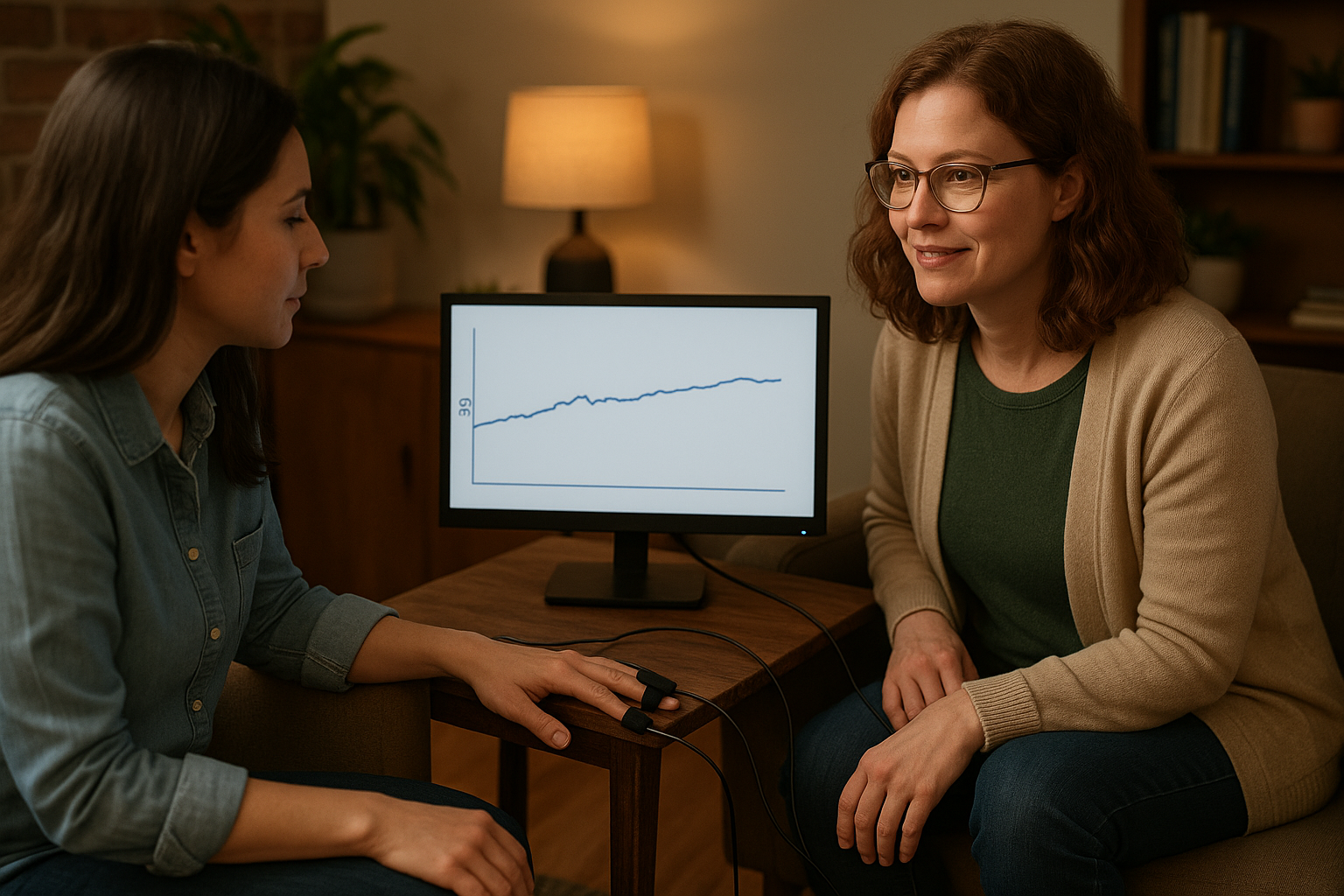Neurofeedback
The Well Mind Center Approach
Neurofeedback is a key component of our holistic approach to mental health treatment. All of our neurofeedback providers are also licensed therapists, ensuring that you receive expert care that integrates both brain-based and therapeutic approaches.
Neurofeedback has gained significant attention in recent years, although it has been in use for nearly 80 years and is supported by thousands of research studies demonstrating its efficacy.
Ready to Learn More?
Call our Neurofeedback Coordinator at 210-595-0075 for more information. Please note, this mailbox is not monitored in real-time. You will need to make sure to leave your name, a good callback number, and a brief description of what you are looking for. It can take up to one week for a return call, although often times it is much sooner.
We’re happy to answer your questions and help determine if neurofeedback is the right fit for you or your loved one.
All About Neurofeedback
The Neurofeedback Treatment Process
Biofeedback
EEG biofeedback is often referred to as neurofeedback. Brainwaves are trained to achieve reduction in brain-based symptoms or to improve cognitive performance. Neurofeedback is a non-invasive, evidence-based method rooted in operant conditioning—training the brain to function more efficiently by rewarding optimal neural activity.
Heart Rate
Blood flow in the arteries of the brain is important for optional functioning. The level of blood flow and oxygen content is an indicator of brain activation. Hemoencephalography (HEG) biofeedback is used to train blood flow to improve attention and focus. In addition, some headache conditions respond well to blow flow biofeedback.
Blood Flow
Our breath rate says a lot about our stress level. Fast, shallow breathing from the chest (A) is not only a stress reaction, but sends a message to the brain and heart that things are not OK, which only reinforces a state of anxiety. Respiration biofeedback trains a slower, abdominal (B) form of breathing which is stress-reducing and healthy.
Breathing
Tensed muscles both cause and maintain chronic pain, which is typically in the back, shoulders and neck. The tension may not even be perceptible to us. Certain types of headaches are the result of excess or prolonged muscle tension. Muscle tension (EMG) biofeedback trains a deeper state of muscle relaxation than can be achieved by conscious relaxation alone.
Muscle Relaxation
As stress increases, tiny sweat glands in our skin react with increased perspiration. The result is clammy hands, which may be barely perceptible. Sensors placed on the fingers record this action by measuring skin conductance (SC). SC is highly reactive to mental states and clients are often surprised with the speed with which a single thought can cause a sudden rise in SC. Skin conductance biofeedback trains down this reactivity and teaches us to inhibit the stress response that may result from anxiety or stress, and therefore reducing these symptoms.
Sweat Glands
Ever notice that your hands are cold when you are in a stressful situation? This is the result of the body’s survival mechanism of reducing blow flow to the extremities when there is a perceived threat. Though we no longer live in the stone age, this stress response continues as a constant state for many people, with its damaging results on immune system function. Skin temperature biofeedback, using a highly sensitive temperature sensor on a finger tip, can be a powerful way to reverse the stress response and associated symptoms. Research has also show the value of skin temperature biofeedback for migraines and Raynaud’s syndrome (also known as white finger syndrome).
Temperature
Contact Us
Let’s get started. Please fill out the form so we can connect you to a counselor best suited for your needs. We can’t wait to support you along your journey and will get back to you shortly!
✉️ Hello@thewellmindcenter.com
📞 (210) 544-2260
FAX (210) 390-0816
📍 13333 Blanco Rd Suite 220, San Antonio, TX 78216
